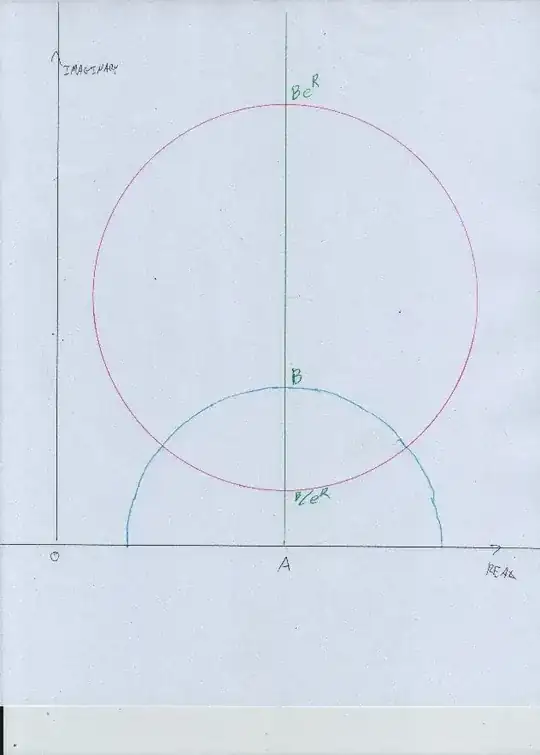Making my comment more explicit ...
Writing $|\cdot|$ for Euclidean distance, and $|\cdot|^\star$ for hyperbolic distance, we have a relatively simple relation for distances from the origin:
$$|OX|^\star = \log\frac{1 + |OX|}{1 - |OX|} = 2 \operatorname{atanh}|OX| \qquad\qquad |OX| = \tanh\frac{\;|OX|^\star}{2} \tag{$\star$}$$
Let the diameter of the target circle meet $\overleftrightarrow{OA}$ at $P$ and $Q$, and define $a := |OA|$, $p := |OP|$, $q := |OQ|$, with $a^\star$, $p^\star$, $q^\star$ their hyperbolic counterparts. Let $r^\star$ be the target circle's hyperbolic radius.
We may assume $p \geq a$ (one of the diameter's endpoints must be on the "far side" of center $A$), so that
$$p^\star = a^\star + r^\star \quad\to\quad p = \tanh\frac{a^\star + r^\star}{2} = \frac{(1+a)\exp r^\star - (1 - a)}{(1+a)\exp r^\star + ( 1 - a)} \tag{1}$$
For the other endpoint, $Q$, an ambiguity arises based on whether the origin lies outside or inside the circle, but we have
$$q^\star = \pm ( a^\star - r^\star ) \quad\to\quad q = \pm \tanh\frac{a^\star - r^\star}{2} = \pm \frac{(1+a) - ( 1 - a )\exp r^\star}{(1+a) + (1-a)\exp r^\star} \tag{2}$$
where "$\pm$" is "$-$" for $O$ inside the circle, and "$+$" otherwise. (If you like, you can absorb the sign into the distances $q$ and $q^\star$, so that they are negative when $\overrightarrow{OA}$ and $\overrightarrow{OQ}$ point in opposite directions, and positive otherwise.)
With the endpoints of the target circle's diameter known, determining the Euclidean center and Euclidean radius is straightforward. $\square$
Note. If $R$ is such that $|OR|^\star = r^\star$, and if we define $r := |OR|$, then $(1)$ and $(2)$ become:
$$p = \frac{a + r}{1 + a r} \qquad\qquad q = \pm \frac{a - r}{1 - a r} \tag{3}$$

